Technologies offer great promise in all phases of care
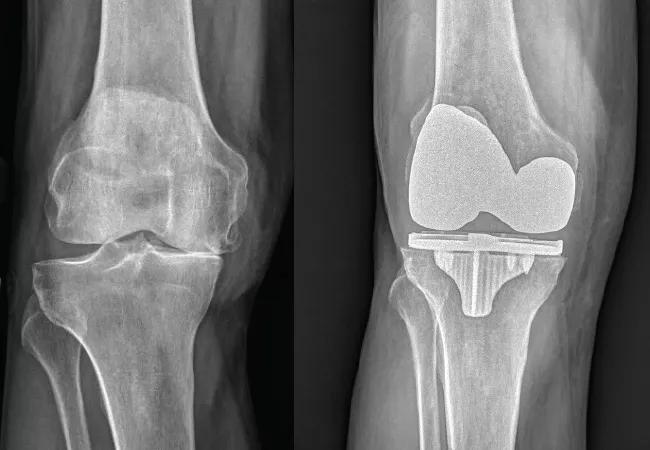
By Viktor E. Krebs, MD; Morad Chughtai, MD; and Michael A. Mont, MD
Cleveland Clinic is a non-profit academic medical center. Advertising on our site helps support our mission. We do not endorse non-Cleveland Clinic products or services. Policy
Total knee replacement (TKR) is utilized for end-stage knee osteoarthritis, which often leads to excellent long-term outcomes with greater than 95 percent survival at 20 years. Yet it has been shown that 20 percent or more of these patients can be dissatisfied with the procedure.
At Cleveland Clinic, we perform over 3,000 knee replacements annually, and have been making patient-focused efforts to improve short- and long-term outcomes. These clinically based projects cover all phases of care: pre-, intra- and postoperative.
In this article, we review several of these innovative efforts:
Each of these technological advancements individually has the potential to change the field of knee replacement surgery. Together, they can revolutionize TKR procedures to the point that patients will have minimal pain and can almost guarantee optimal short- and long-term results in the future.
Robots have been used in various surgical fields, but have only recently been utilized clinically in orthopaedics. They are purported to improve accuracy, precision and outcomes for all types of surgeries. In knee replacements, we have performed studies that show improvements in placement of the implant, which should also translate into better patient outcomes.
Michael A. Mont, MD, former Chairman, Department of Orthopaedic Surgery, helped a team complete a cadaver study that assessed knee alignment and component position using robotic and non-robotic methods. Robotic surgery achieved more accurate component position and alignment than the manual (non-robotic) technique.
Additionally, Cleveland Clinic is one of four sites involved in a multicenter clinical trial comparing robotic techniques with standard total knee replacements. Investigators are optimistic that this technology will improve outcomes in knee replacement.
Traditionally during TKR, implants are placed into the knee using cement to allow for initial implant stability and adherence to bone. However, cement may not permit optimal bone-implant integration, which may compromise long-term results.
To circumvent this issue, Cleveland Clinic researchers and others have developed “press-fit” implant designs. These implants do not require cement and, therefore, bone grows into the implant surfaces. This theoretically could provide better long-term implant longevity, especially in younger patients in whom these prostheses may need to last for 20 or more years.
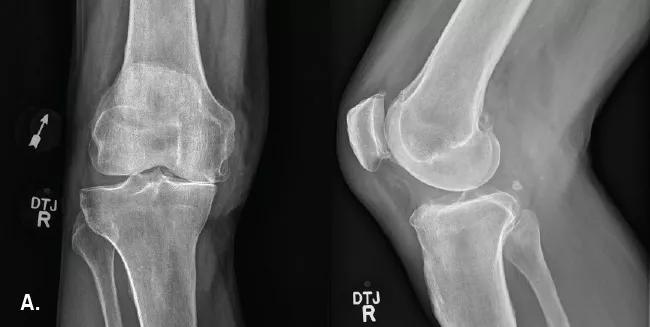
Figures. Total knee arthroplasty
Knee implants traditionally have a standard design and come in various sizes to allow the surgeon to choose the best fit for each patient. However, individual patient anatomy can vary markedly.
To address the need for individualization, we have worked with a company that develops customized 3-D printed prostheses with additive technology. Theoretically, this will allow for a knee replacement that more closely matches the patient’s native anatomy, thereby potentially improving patient function and satisfaction.
Knee replacements require a sizable incision over the knee, which, after completion of the surgery, generally requires a meticulous technique to achieve a durable and aesthetic skin closure.
Recently, barbed sutures have gained attention as they offer the surgeon a faster and tighter repair than traditional sutures. These sutures contain very small “barbs” that instantaneously lock wound edges together without requiring the surgeon to tie a knot.
The “knotless” technique offers several clinical advantages: shortened operative times and less exposure to anesthesia, use of resorbable sutures that do not require removal at a later visit and more durable wound closure.
We are performing a randomized, controlled trial comparing barbed sutures with traditional ones for patients undergoing total knee replacement.
Barbed sutures may become the new standard in joint replacement surgery and may ultimately reduce costs and improve efficiency. These new sutures are antiseptic impregnated, which is consistent with the World Health Organization guideline that suggests the use of these coatings to reduce surgical site infections.
Adequate muscle strength is an essential component for a successful total knee replacement, and is usually achieved through exercises and physical therapy. A relatively new technique called neuromuscular electrical stimulation (NMES) may make it easier and faster for patients to gain this muscle strength.
NMES involves use of a brace that transmits pulses to the muscles around the knee and causes them to contract, thereby strengthening the knee joint.
We are involved in a controlled trial assessing use of this technology both pre- and postsurgery in patients who undergo total knee replacement. The objectives are to strengthen the knee prior to surgery and help with postoperative recovery. Patients should be back in action much faster after using NMES.
Adequate pain control after total knee replacement can be challenging for both providers and patients. Pain control is often achieved through the use of opioids (narcotic medications), which can have dangerous side effects and are potentially addictive. One opioid-addicted individual dies every 19 minutes in this country, and many have become addicted as a result of surgery-related prescriptions (Centers for Disease Control and Prevention).
We recently participated in a multicenter, randomized controlled trial assessing the use of a novel long-acting local anesthetic. Liposomal bupivacaine is administered to the patient perioperatively, just before closure of the wound. Several studies have demonstrated improved pain control, decreased opioid use and better pain scores in patients who received this agent. The drug has been instituted as a part of our pain management protocol for patients undergoing total knee replacement.
With a recent call to action from the U.S. Surgeon General to end the opioid epidemic, it is essential to investigate and utilize therapies that may potentially help physicians minimize opioid use for pain control, in turn reducing the number of patients who become dependent on or addicted to opioids.
Additionally, adequate pain control may result in better patient satisfaction and better Press Ganey scores, which can help optimize hospital reimbursement. Our team has published several reports investigating this, and has found promising results with liposomal bupivacaine.
References
Dr. Krebs is on staff and Dr. Chughtai is a research fellow in the department. Dr. Mont is former department chair.
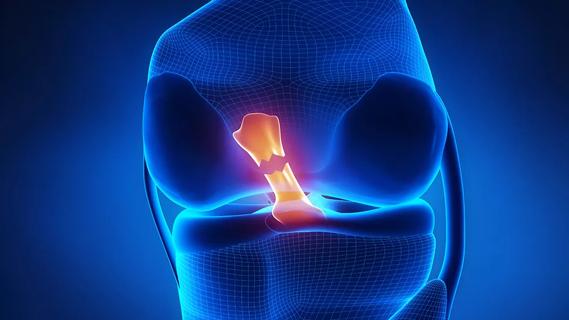
Study reports zero infections in nearly 300 patients
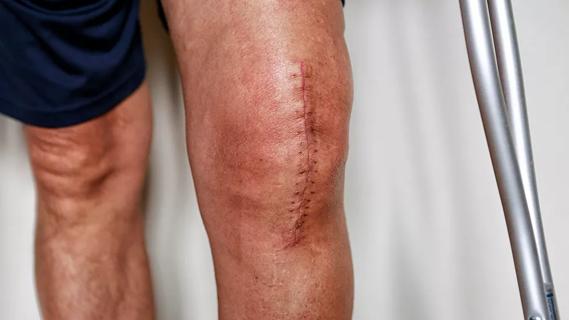
How to diagnose and treat crystalline arthropathy after knee replacement
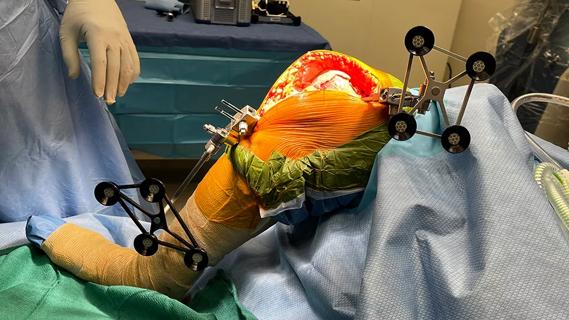
Study finds that fracture and infection are rare

Reduced narcotic use is the latest on the list of robotic surgery advantages

Cleveland Clinic orthopaedic surgeons share their best tips, most challenging cases and biggest misperceptions

How it actually compares to posterior and lateral approaches
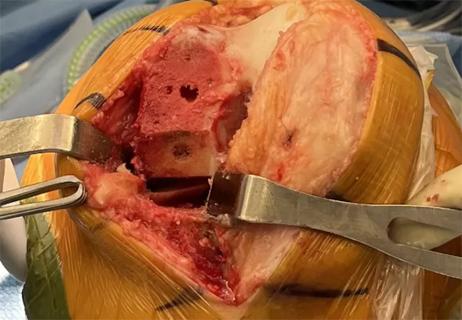
When procedure is performed by high-volume surgeons, outcomes are comparable to total knee replacement
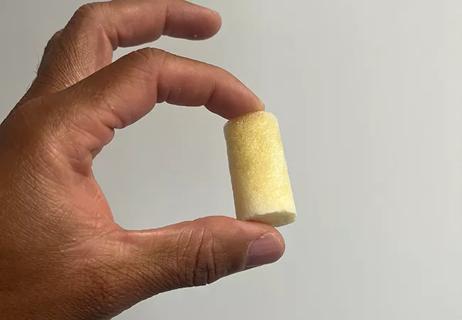
Clot substitute helps rejoin the stumps of a torn ligament